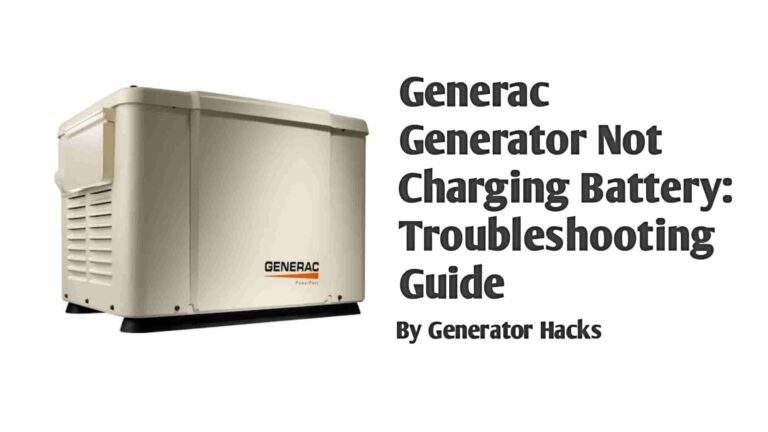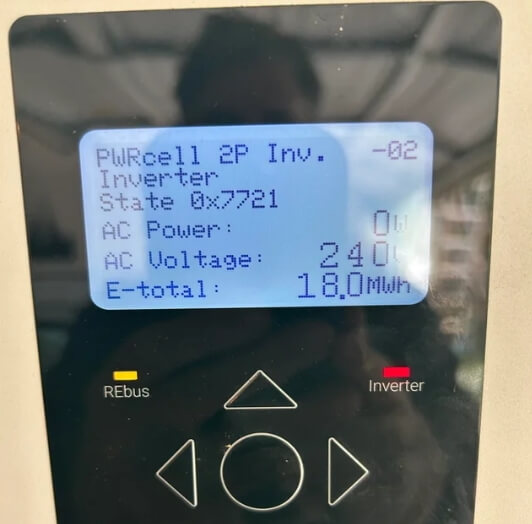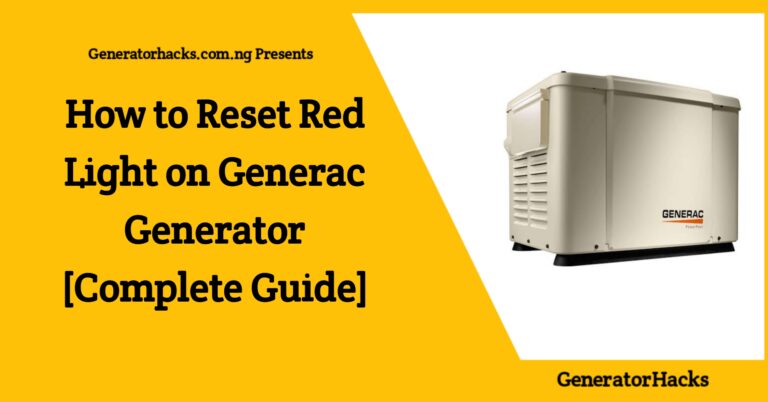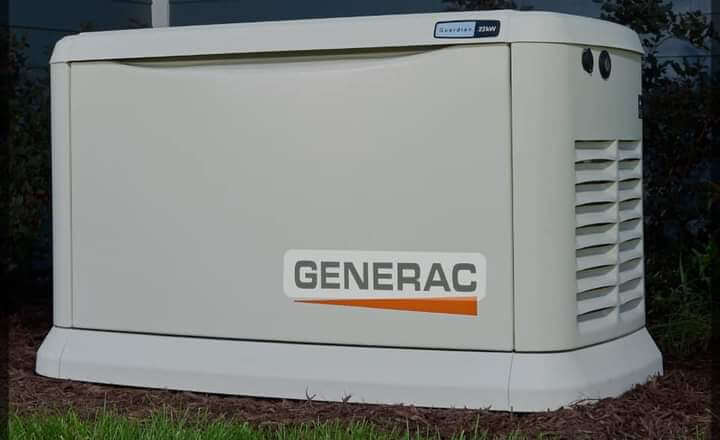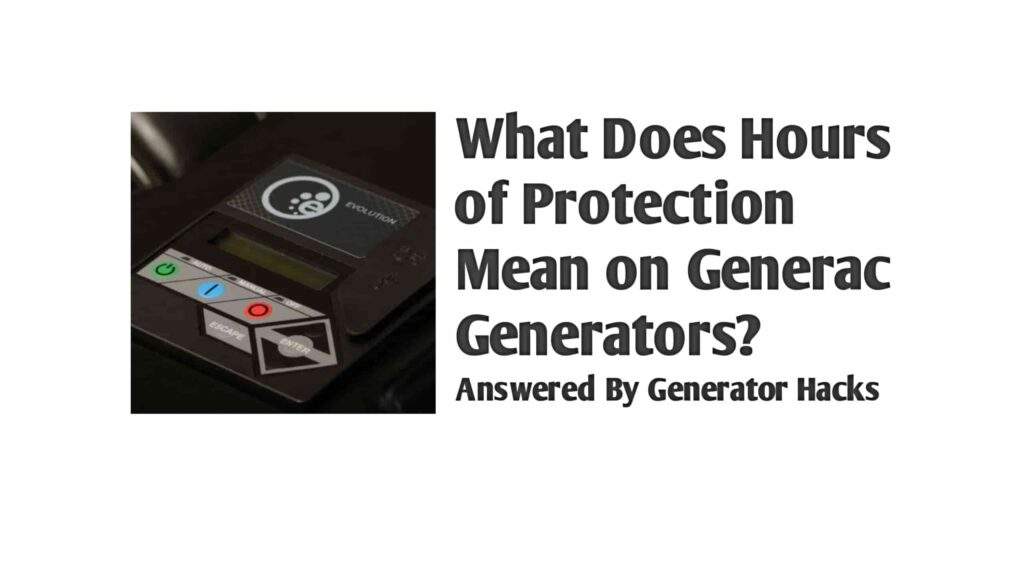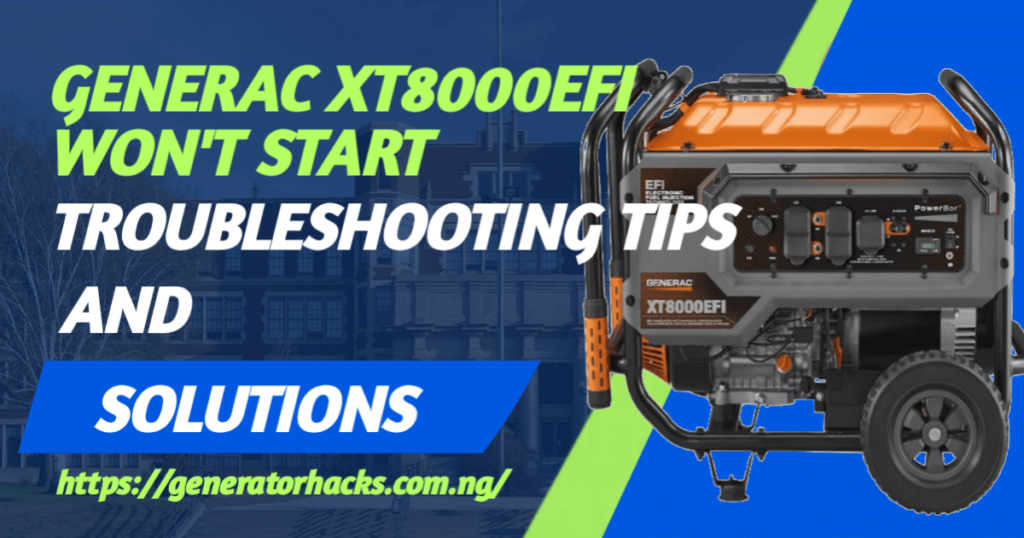As an Amazon Associate, we earn from qualifying purchases. This does not affect the price you pay or the quality of the products you buy. For more information, please read the full affiliate disclosure here.
Like any other generator out there, Generac generators may also develop problems from time to time, and one of the common issues that they face is voltage regulators.
At the same time, the voltage regulator is also one of the most important parts of Generac generators, as it regulates the voltage output, ensuring that it remains within a safe operating range.
But when issues like this (with the voltage regulator) come up, what are the signs that it’s the voltage regulator that’s having a problem, and how can you fix it?
That’s what we’ll discuss in this blog post. Here, you will learn everything you need to know about Generac voltage regulator problems, such as their signs and how to fix them.
What is a voltage regulator on Generac, and why is it important?
Voltage regulators are one of the most important electrical parts in Generac generators because they maintain a constant voltage output from the alternator.
The voltage regulator monitors the output voltage and adjusts it to maintain a constant level. They protect the connected appliances and devices from voltage spikes and surges that could damage them.
In addition, they also ensure that the generator operates within safe parameters, preventing any damage to the generator itself.
Signs of Generac voltage regulator problems
Generac generators may display some signs when the voltage regulator is malfunctioning. Some of the common signs you will notice include:
1. Fluctuating voltage output
One of the most common signs of a faulty Generac voltage regulator is a fluctuating voltage output. This means that the voltage output will keep changing, making it difficult to maintain or supply steady power.
I would argue that you might have experienced your generator voltage going high and low at the same time—if you’d noticed anything like this, it’s caused by the fluctuating voltage output, which also means the generator is not stable and needs to be fixed.
2. Overvoltage or undervoltage
In this case, a faulty voltage regulator may also cause your generator to overvoltage or undervoltage, which might also cause damage to your appliances or devices connected to the generator.
This may happen all of a sudden, resulting in a lot of damage. Under voltage, your appliances are kind of safe, but with overvoltage, I’m sorry, your appliances or devices might get damaged if you aren’t using surge protectors or any other means to stabilize your generator.
One feature I love about Generac generators is the overvoltage error code 1800 and undervoltage error code 1900, which mean that there is an error that needs to be fixed.
Once any of these two errors show up on your Generac generator, it won’t start until you fix the issue on the generator.
Also Read:- How to Reduce Voltage in Generator in 4 Simple Ways
3. The generator fails to start.
In some cases, a faulty voltage regulator could prevent the generator from starting. Moreover, the Generac generator has a feature that stops the generator from running if it notices any fault with the generator, for instance, when the generator is overspeeding.
This is because when the generator speeds up, there’s no way you won’t experience overvoltage. Moreover, you will notice an error code 1201 or 1205 on your controller if there’s an overspeed.
Even if it is under speed, it won’t still run because it will also show an under-speed error code of 1600. But with the generator not starting, you can fix it in no time.
4. Burning smell
Lastly, a burning smell from the generator could indicate that there’s a problem with the voltage regulator or alternator, which could be due to overheating or damaged parts at the alternator’s end. In this case, it would be better if you turned off the generator and called your technician to help you troubleshoot the issue.
Causes of Generac Voltage regulator problems
There are several reasons why your Generac generator might develop voltage regulator problems. Without knowing these causes, there’s no way you can fix the problem.
So, here are some of the common causes of Generac generator regulator problems:
1. Overloading
When you overload your Generac generator, it could cause the voltage regulator to malfunction. Overloading occurs when the generator is powering appliances or devices that require more power than the generator can provide.
One thing with overloading is that you will want to raise the generator to the normal output of the load, but forgetting that, when you remove the loads on the generator, it will also cause the generator to overspeed, resulting in voltage regulator problems.
2. Overheating
Secondly, your Generac voltage regulator could also malfunction due to overheating. This could be caused by a lack of proper ventilation, high ambient temperatures, or a malfunctioning cooling system.
According to Welland Power, if the load on the engine is too high, meaning the coolant cannot be cooled fast enough, this leads to the coolant getting hotter and hotter until the coolant switch closes on fault, causing shutdown. (or the controller shutting it down by reading the sender).
It also means that when you overload your generator, it mostly causes it to overheat, and to prevent it, you need to make sure you don’t overload the generator.
3. Wear and tear
Thirdly, Generac voltage regulators, like any other parts of the generator, may also wear out over time, which could be due to constant use, exposure to harsh weather conditions, or poor maintenance.
4. Electrical surges
Lastly, electrical surges, such as those caused by lightning strikes or power outages, could also cause your generator to develop a voltage regulator problem.
How to Troubleshoot Generac Voltage Regulator Problems
If you suspect that your Generac generator is experiencing voltage regulator problems, there are several steps you can take to troubleshoot the issue, but if you can’t, you should call your technician to help you with it.
But if you’d like to do it yourself, you can troubleshoot the generator by following the steps below:
- Check the voltage output: Use a multimeter to measure the voltage output of the generator. If the voltage is fluctuating (overvoltage or undervoltage), this could indicate a problem with the voltage regulator.
- Check the wiring: Inspect the wiring of the generator and look for any signs of damage or loose connections. Faulty wiring could cause voltage regulator problems.
- Check the capacitors or AVR. Capacitors and AVRs are essential parts that regulate the generator’s voltage. You can check the capacitors and AVR for signs of swelling, leaking, or bulging. You can locate them on the alternator side of the generator.
- Inspect the cooling system. A malfunctioning cooling system could cause the voltage regulator to overheat. Check the cooling system and make sure that the air filters are clean and the cooling fans are working correctly.
Also Read:- How to Adjust Generator Voltage: A Step-by-Step Guide
How to Fix Generac Voltage Regulator Problems
If you have identified a problem with the voltage regulator, there are several steps you can take to fix it. However, you must note that some voltage regulator problems may require the services of a professional technician.
So, therefore, here are some of the steps you can take to fix voltage regulator problems:
- Replace the Voltage Regulator: If the voltage regulator is faulty, you may need to replace it. You can purchase a replacement voltage regulator from a Generac dealer or an authorized service center. Ensure that you choose the right voltage regulator for your generator model.
- Replace the capacitors or AVR: If the problem is with the capacitors or AVR, you may need to replace them. You can also purchase replacement capacitors from a Generac dealer or an authorized service center.
- Clean or replace the air filters. Thirdly, a dirty air filter could cause the voltage regulator to overheat. You can clean or replace the air filters to ensure that the cooling system is functioning correctly.
- Check the wiring: Lastly, inspect the wiring and replace any damaged or faulty wiring. Make sure that all connections are tight and secure. You can also check the bearing at the alternator to see if there are any issues with it or if it has worn or not. By doing that, you will be able to ensure that there’s no issue with the alternator.
Also Read:- How to Reset Generac Generator in 7 Easy Ways
Preventing Generac Voltage Regulator Problems
Prevention is always better than cure when it comes to generator problems. Here are some steps you can take to prevent voltage regulator problems:
- Proper Maintenance: Regular maintenance is crucial to preventing voltage regulator problems. Follow the manufacturer’s recommended maintenance schedule and keep the generator clean and well-lubricated.
- Proper Use: Do not overload the generator or use it for purposes it is not intended for. Follow the manufacturer’s guidelines on the generator’s maximum power output and use only appliances and devices that the generator can safely power.
- Protection from Harsh Weather Conditions: Generators should be protected from harsh weather conditions such as rain, snow, or extreme temperatures. You should install your Generac generator in a well-ventilated area and use a weatherproof cover if necessary.
- Surge Protection: Lastly, install a surge protector between the generator and any appliances or devices connected to it. It will protect the voltage regulator from electrical surges that could cause damage to your appliances or devices.
Final Thought
Generac voltage regulator problems can be frustrating and potentially dangerous, but they can be prevented and fixed with proper care and maintenance. Knowing the signs of voltage regulator problems and troubleshooting steps can help you identify and fix any issues quickly.
Therefore, always remember to follow the manufacturer’s guidelines on maintenance and usage to prevent future problems. If you encounter any significant issues, it’s always best to seek the services of a professional technician.
